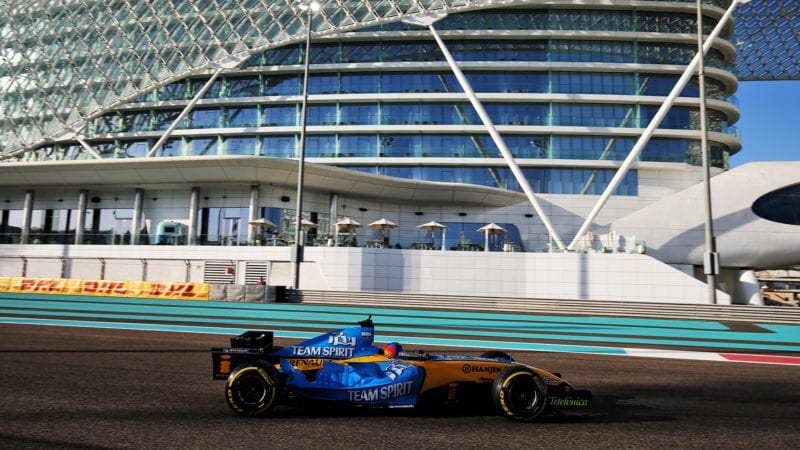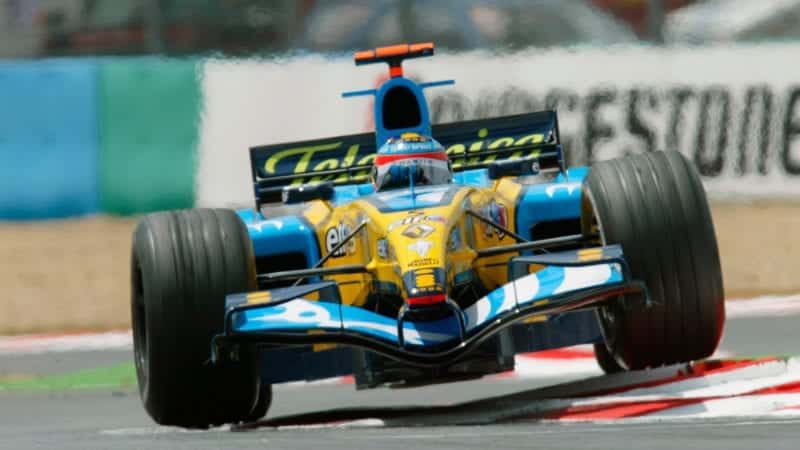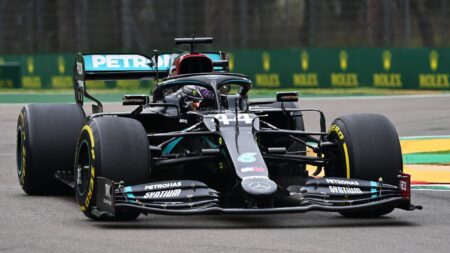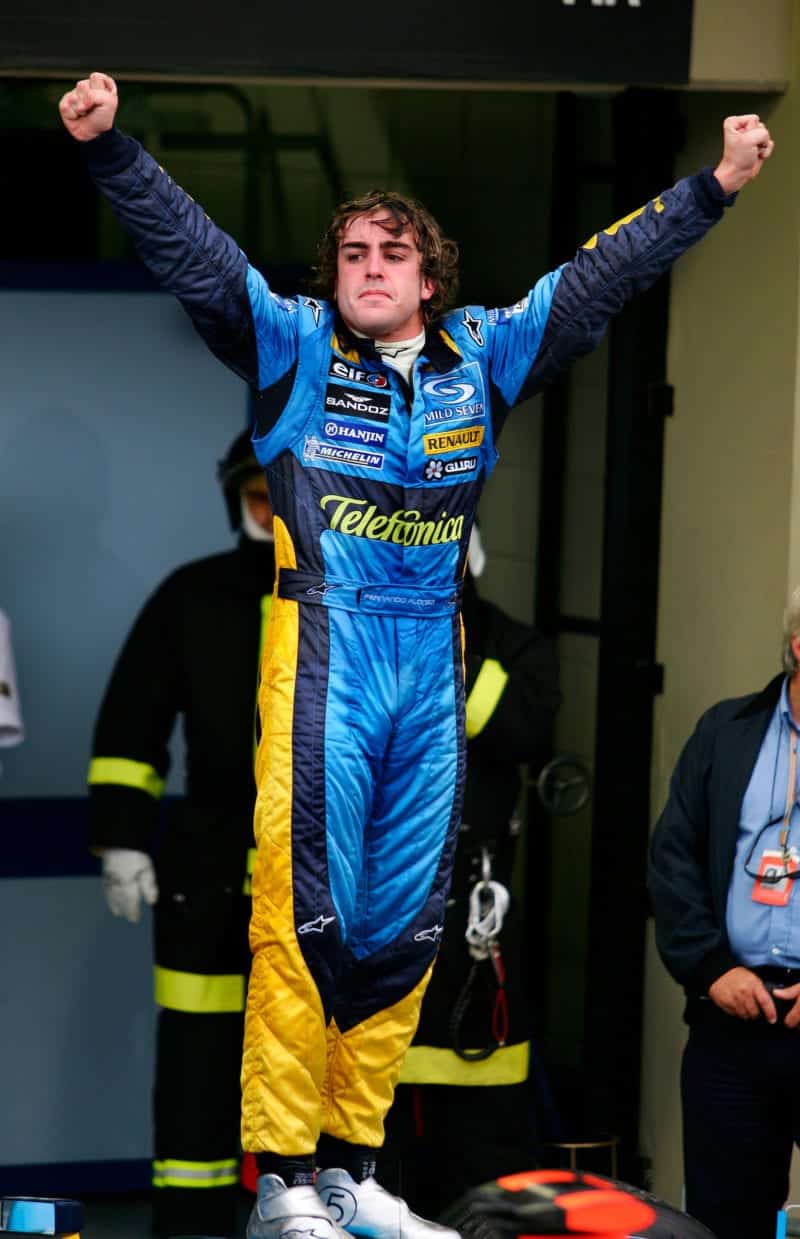It proved the key to overhauling Ferrari, which had previously built its success on Bridgestone tyres which were fast but fragile compared to the Michelins.
“I think these things never tend to be one dimensional, but I think the Michelin tyres were very important,” says Bell. “We were able to develop the car around the tyre and the tyre around the car, which crucially I don’t think Ferrari were able to replicate”.
Tyres were behind Ferrari’s only victory of the 2005 season: the infamous United States Grand Prix at Indianapolis where a failure of Ralf Schumacher’s Michelin tyre in the banked Turn 13 led to Michelin teams withdrawing from the race and only six cars taking the grid to the clear displeasure of the crowd.
“Indianapolis was a really sad moment for Formula 1,” says Bell. “I think we all learnt a lot from the event. It certainly didn’t do the sport’s reputation in America any good, for such a debacle to occur at an epicentre of American motorsport like Indianapolis”. Indeed, Formula 1 only returned to America in 2012, at the Circuit of the Americas track in Austin, Texas.
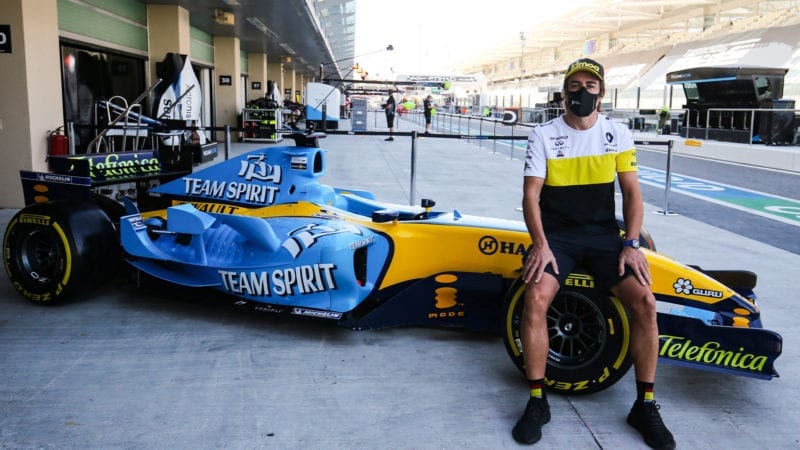
Alonso reunited with the R25 in Abu Dhabi
Renault
With Ferrari deemed not a threat in 2005, Bell’s attention was firmly on McLaren, which he concedes was often faster than the R25. Alonso won the title with two races to go but the Constructors’ Championship battle went down to the wire at the last race of the season.
“McLaren were absolutely the team to watch out for during the season. They arguably had the faster car, but they let themselves down over the reliability of the car and its driveability. They were the real challengers that year and to topple them, considering their heritage and that it went right down to the wire, it was hugely satisfying”.
